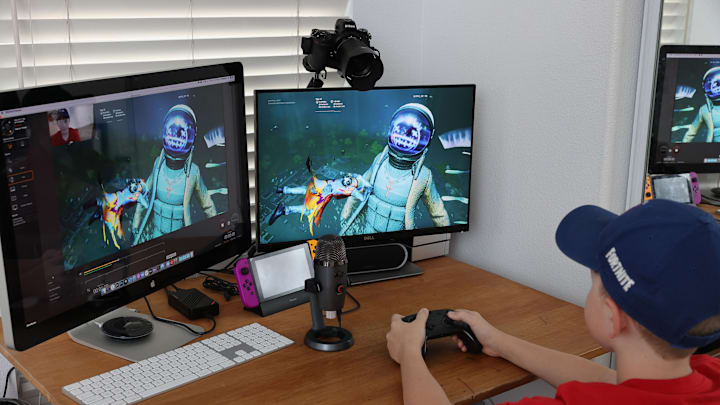The PlayStation is currently the most popular gaming console, but to get the most out of it, you will need the best display, whether it be a monitor or a TV. Let’s look at the benefits of each option so you’ll have a better idea about what’s right for you.
Display quality: Resolution and color accuracy
TVs and monitors can vary in display quality. TVs offer a cinematic experience with larger screens and enhanced color accuracy, making them ideal for players who prioritize immersive, high-definition visuals. Many newer TVs support HDR (High Dynamic Range) technology, which can create a more lifelike environment in games like Horizon Forbidden West or Ratchet & Clank: Rift Apart.
Monitors, on the other hand, tend to prioritize speed and resolution. While some high-end monitors now support 4K and HDR, the more affordable options might only go up to 1440p. However, they often have better pixel density, which creates sharper images up close, making them a good choice for gamers with limited space.
Refresh rates and response times: Faster reaction for competitive gamers
Refresh rates and response times are where monitors typically outperform TVs. Many monitors offer refresh rates of 120Hz or more, meaning they can refresh the image faster, which is a significant advantage for fast-paced games like Call of Duty or Fortnite. TVs are catching up, but only the latest models offer competitive refresh rates at affordable prices.
Response time is also crucial for gaming. Most gaming monitors have response times of 1ms to 5ms, reducing motion blur and creating a smoother experience. TVs often have higher response times, which could lead to slight delays in fast-paced scenes. For competitive gamers, a monitor might provide the edge needed to stay one step ahead.
Everything you need to know about next-gen gaming consoles
Input lag: Crucial for real-time response
Input lag is the delay between pressing a button and seeing the result on the screen. Monitors usually have less lag than TVs, with the best gaming monitors reducing lag to 1ms. Some TVs may have a game mode to reduce this lag, but they will still struggle to keep up with the best monitors.
If you mainly play story-driven or single-player games, input lag may impact your experience less. But for competitive games, like Rocket League or Street Fighter V, where milliseconds count, a monitor’s low input lag might give you the edge.
Screen size and viewing distance
If you’re looking for a big-screen experience, a TV is hard to beat. Sitting on the couch with a 55-inch TV offers an immersive experience that’s tough for even the largest monitors to match. For gamers who prioritize the visual scale and prefer to sit back and relax while playing, a TV might be the better choice.
Monitors, however, are ideal for desk setups. Smaller screens mean that everything is within your field of vision, allowing you to see all on-screen action without moving your head.
Price considerations
High-quality TVs with 4K, HDR, and high refresh rates can be pricey, but budget models with reasonable specs are also available. Monitors with similar specs are often more affordable, particularly if you’re prioritizing performance over screen size.
If budget is a constraint, a monitor may offer more gaming-focused features for your money.
Follow GeekSided for more tips to improve your gaming.
